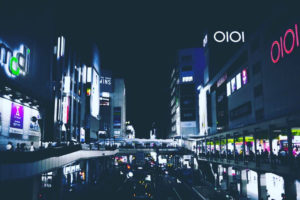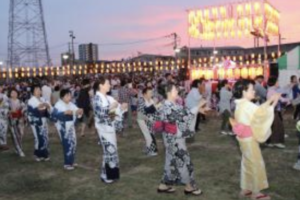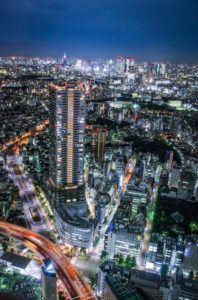(Machida)
Moving into a new place can be an exciting yet expensive decision.
It is essential that you view the property in person as the photos may (or may not) do the property justice.
You may be able to identify issues that are not present in the photos, which may not be up to date.
Visiting the property gives you a feel for the location and the neighbourhood.
In any cities, there are some neighbourhoods where you don’t walk in the middle of night alone.
In fact, in Tokyo there is almost none.
Maybe you may feel weird if you walk on the street early in the morning in Shinjuku Kabukicho but you won’t feel
extreme insecurity.
I recently read a book written by a guy called ‘Masayoshi Osaka’. The book is called ‘Where are the places you don’t
want to live in greater Tokyo ?’ It is highly controversial and full of prejudice such as race, income and business.
He is a reasonably well-known blogger, originally from Osaka.
He is running a media company “Tokyo Deep Guide” , which is the extreme biased media.
The media shines light not on the positive side of the cities/towns in Tokyo but on the negative side.
He is also a racist. Apparently he does not like Koreans, Chinese and Indians.
The book often makes you feel very uncomfortable because his language is not very civil.
Nevertheless, the book gives us some good practical insights.
Let me share some of his ideas.
*
Please note the following ideas are merely based on Mr. Osaka’s personal opinion and observation.
I do not necessarily agree to his ideas and I am not a racist.
How to assess the area where you don’t want to live.
Check the train station area
-Find the number of pachinko parlors (Japanese gambling)
Generally speaking, gamblers not very nice people. You should avoid gamblers.
Are there gambling stadiums such as bicycle races, horse races, boat races ? If yes, you may want to re-consider.
If you find an off-site betting ticket office nearby, you should avoid living in the area.
-Check if there is a love hotel or a sex industry.
Love hotels (where people make love) are socially needed but you don’t want to see love hotels
near your house. They are typical not-in-my-back-yard facilities.
-Check the number of Japanese izakaya (Japanese style taverns)
You want have some izakaya to dine during the weekend, but you don’t want to live in
a place like Shinjuku.
-Check if there are many restaurants which are mainly chain stores catering for single person.
Narimasu station area (in Saitama) has lots of chain restaurants and customers are not very nice.
-Check the customers of McDonald’s and Mister Donuts near the station
You can find McDonalds in any stations in Tokyo but the customers base for each shop is very different.
If you find too many delinquent teenagers, probably you should keep away from the area.
-Check If there are many manga cafes and internet cafes.
Kamata station area has lots of manga cafes and some people are actually living in the cafe.
-Please check if there are many homeless people
We are sorry for them but we don’t want them in our back yard.
-Check if there are many strange foreigners who are not well-dressed
There are many foreigners in Shin-okubo, Nishikasai, Gyotoku, Shibazono-danchi (Kawaguchi)
These areas are not bad but he does not recommend.
-Check the type of books in the bookstores.
If you find many adult magazines on the shelves, you will live with that type of people.
(Yashio)
Walk Around the area
-Check the terrain in the area. This is a very practical advice. Japan is very
Avoid flooded areas.
Narimasu, Itabashi ward is where the Seishogawa river and Shakujiigawa river are flowing and there is a relatively high risk of flood damage.
Please also check the hazard map of the area which is announced by the municipal government.
-If you find no university or first class private high schools nearby, it is not the good sign.
Generally speaking, there are many excellent private universities in the west and south of Tokyo.
There are few excellent schools near the Sumida River in the east Tokyo.
-Avoid areas with many public housing complexes.
Avoid areas with housing complexes such public apartment house owned by Tokyo metropolitan government, local city and wards.
He does not recommend Seishincho town in Kawaguchi, where there are many Chinese people, and in Nishi-Kasai, where there are many Indians.
There are many low-income people in public housing and the quality of residents is not probably very welcome.
-Try to avoid areas where there are many wooden old and run-down and apartments.
-Please check the manners of how people put out their trash in the area.
One good way to check the quality of the population is watching if you can find bad-manners residents.
Checking how to put out garbage of inhabitants is very useful.
He can hardly believe that in Nishikawaguchi Station area, foreigners just putting away oversized trash on the road without proper payment.
They throw away the oversized trash on the street.
Those who want to throw such trash are required to call the local government in advance and need to buy
paid tickets)
-Check the price of drinks in the vending machines
If you see drinks from leading manufacturers are not sold at suggested prices or
Products from second-class manufacturers that have never been heard are being sold,
It is not the good sign.
-Avoid an industrial area
-Avoid the area where it was a former slum
Typically near Wakaba 2-chome in Shinjuku ward, Higashi Ueno 4-chome in Taito Ward, Shiomi in Koto Ward
Kaname-cho in Toshima Ward
-Watch for the office of cult religions such as Aum shinrikyo.
You can find their office in Matsue in Edgard Ward
Yashio, Koshigaya in Saitama prefecture
-If you find many posters of the Communist party and the Komeito party, it is not the good sign.
Such areas are where there are many low-income people live.
Specifically, Kita Ward, Arakawa Ward, Adachi Ward, Sakai City in Saitama Prefecture
-Check the town at night
In a safe area, people on the street around 10 o’clock at nigh are just ordinary.
But in the bad areas, around 8 o’clock in the night, you will see a number of Chinese and Pakistani people
The following is the worst ranking (name of stations)
- Yashio in Saitama
- Kawasaki in Kanagawa
- Nishikawaguchi in Saitama
- Ikebukuro in Toshima Ward, Tokyo
- Warabi in Saitama
- Takenotsuka in Adachi Ward, Tokyo
- Toda in Saitama
- Koiwa in Edogawa Ward, Tokyo
- Matsudo in Chiba
- Machida in Tokyo
Why Yashio is so bad ?
I hereby share the summary of his opinion on Yashio station. (The worst No.1)
- Historically it is not very popular for a long time.
- It is right next to Adachi Ward which is historically very industrial area.
- The area used to be wetland (*by the way, Ginza, Harumi area used to be wetlands centuries ago)
- There are a number of ‘not-in-my-back-yard’ facilities around such as industrial waste disposal plants and small automobile plants
- There are many low skilled foreign workers
- The quality of air is not good due to heavy traffic.
- There are many yakuza, Aum shinrikyo cult people and delinquent teenagers.
(Ikebukuro)
Toshihiko Yamamoto
Real estate investing consultant and author.
Founder of Yamamoto Property Advisory in Tokyo.
International property Investment consultant and licensed
real estate broker (Japan).
He serves the foreign companies and individuals to buy and sell
the real estates in Japan as well as own homes.
He holds a Bachelor’s degree in Economics from
Osaka Prefecture University in Japan
and an MBA from Bond University in Australia
Toshihiko’s book, “The Savvy Foreign Investor’s Guide to Japanese Properties: How to Expertly Buy, Manage and Sell Real Estate in Japan”is now out on Amazon, iBooks (iTunes, Apple) and Google Play.
About the book
Amazon.com Link
Other Helpful Articles
Don’t trust major brands: How do big realtors exploit you in the shady deals in Japan ? (YouTube)
Buying a house in Japan ? Here’s all-too common mistakes to avoid
How to avoid the severe flooding in Japan ? : Over 200 people died in recent floods and landslides
Final Thought
I personally like Machida station (the worst No.10). The area is very vibrant and offers lots of activities such as dining, shopping, gyms and theaters. The author’s opinion is very biased and full of his prepossession. The point is that it is very important to know how ordinary people may perceive and judge these areas. The real value of the property can be judged by your own parameters but that is not necessarily match the demands of the market, especially when you want to sell it.




